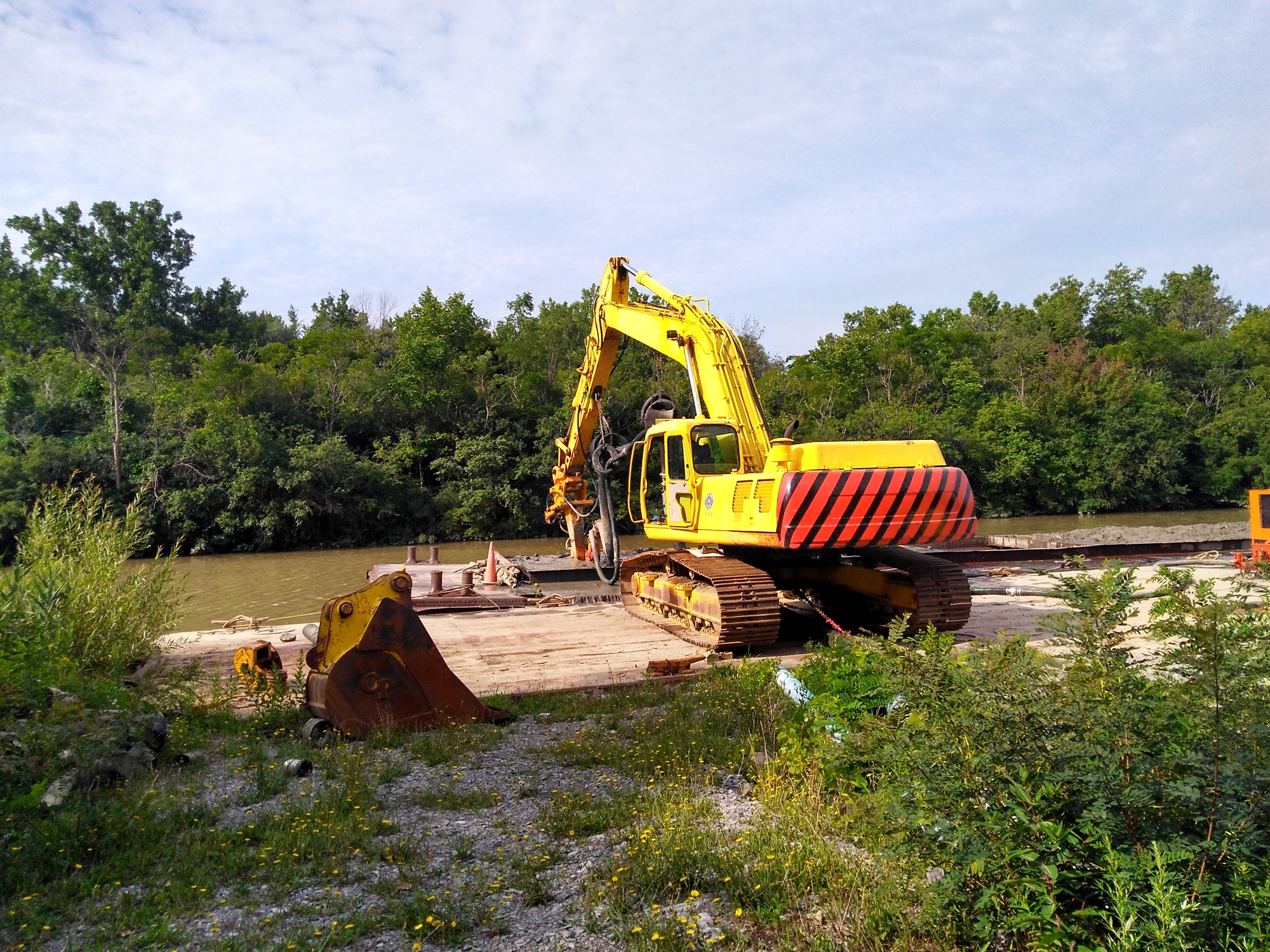Mud
Today we met a few of the NY State employees who maintain the canal's 12 foot depth. They do that by moving mud. Lots of mud.

| Heart | 0 | Comment | 0 | Link |
The tug crew scoops up mud and loads it on to a barge. Then they haul the barge to an unloading site. While the full barge is being unloaded, the tug starts filling up another empty barge.
Soon after we left the tug crew, we reached the mud unloading dock. The mud isn't scooped out of the barge, it's sucked out by a slurry pump that acts like a giant vacuum cleaner. The slurry of mud then travels through a pipe to a site where it dries out and gets piled up.

| Heart | 0 | Comment | 0 | Link |
The unloading crew told us that they can unload a barge with fresh mud in from 90 minutes to 2 hours. But the mud they were working on when we came by had been sitting in a barge drying out for a few days. In that case the unloading process takes about 4 hours because they have to pump in water and mix it into the stiff mud to loosen it up enough to pump.

| Heart | 0 | Comment | 0 | Link |
Our meeting with the workers took place where the Erie Canal crosses the Genesee River. Nature is full of river confluences and branching river deltas, but in nature an east-west river will never cross a north-south river and continue on its way. But the canal isn't natural, so that's exactly what it does.

| Heart | 0 | Comment | 0 | Link |
The Genesee River matches the height of the canal at the crossing. The canal maintains that same height for many miles to the west of the crossing, but to the east of the crossing the canal soon drops down through a couple of locks.
The locks are numbered from 1 in the east (at the Hudson River) 35 in the west (at Lockport). Lock 33 is a bit east of the Genesee River crossing.
The little red and white tug in the pictures above is a new model. You can see it's much smaller than the "classic" tugs like the Dewit Clinton tug we met back in Lockport, but it's engine is actually 3 times more powerful. Based on NY State law, the license required to operate a tug depends on the length of the tug, not the power of the tug. The larger classic tugs require a full commercial license, the smaller, more powerful, tugs do not.
In addition to moving goods and clearing mud, the state tugs also clear floating trees and branches. Because the canal goes through forested land, there are lots of trees to clear.

| Heart | 0 | Comment | 0 | Link |

| Heart | 0 | Comment | 0 | Link |

| Heart | 0 | Comment | 0 | Link |

| Heart | 1 | Comment | 0 | Link |

| Heart | 0 | Comment | 0 | Link |
We visited the historical society in Palmyra. A docent took us through several 19th century buildings near the canal, including a couple of boarding houses. She mentioned that crews from canal boats would stay at the boarding house for as long as the boat was docked in Palmyra. The boarding house would charge by the hour for half a bed. It's an evocative image I wish I could get out of my head. I can't help thinking that the rate I would be willing to pay would depend a lot on who was in the other half of the bed.

| Heart | 1 | Comment | 0 | Link |

| Heart | 0 | Comment | 1 | Link |
https://collectmedicalantiques.com/gallery/alternating-current#
6 years ago
| Rate this entry's writing | Heart | 4 |
| Comment on this entry | Comment | 0 |






